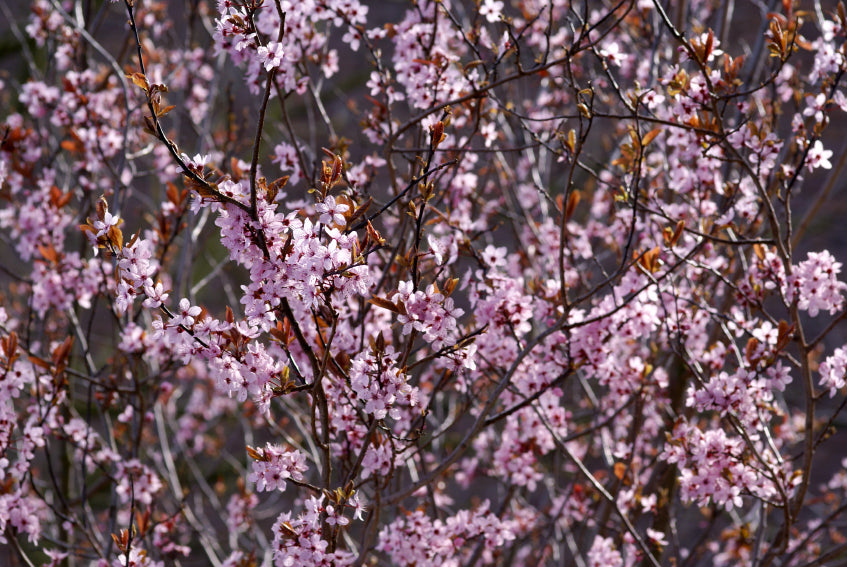Blood plum (Prunus cerasifera)
The blood plum is more of a true tree than a shrub, growing rapidly and usually branching from the ground up. It produces edible, juicy, and sweet-tasting plums annually, ready for harvest in September.

Growth form:
This very robust, frequently planted small tree has a broad, conical crown that becomes more rounded with age. The small tree eventually reaches a height of 5 to 8 meters and a width of 3 to 6 meters.
Leaf and flower:
The flowers and leaves of the blood plum blossom at the same time. Numerous white flowers with a pink stamen, or pink, bloom between March and April. After flowering, the fruits begin to develop. The foliage is particularly striking, remaining a dark purple throughout the summer. The leaves are elliptical to egg-shaped and approximately 4 to 6 centimeters long.
Site requirements/care measures:
This shrub is highly adaptable, but prefers a sunny to partially sunny location. The soil should be moderately dry to moist; all well-drained soil types from neutral to strongly alkaline are suitable. Due to its heat tolerance and winter hardiness, the black plum is generally a good and robust small tree.
Varieties:
'Pissardii': This form was introduced to France in 1880 by M. Pissard, a Persian court gardener. All other varieties originate from this variety. However, it is rarely available commercially.
Other varieties include 'Hessei', 'Woodii', 'Nigra' (probably the best known variety), 'Trailblazer' and 'Prunus x cistena'.
TEXT: Nora Kriegs












